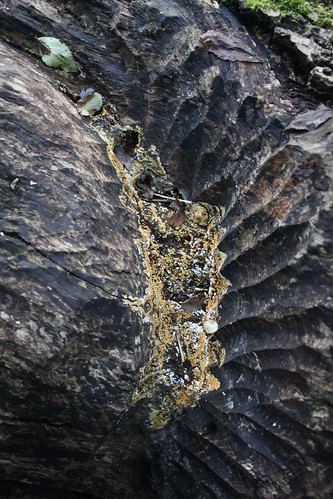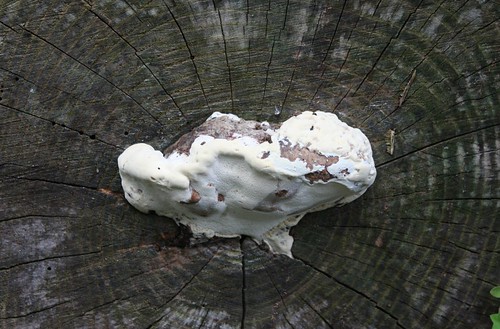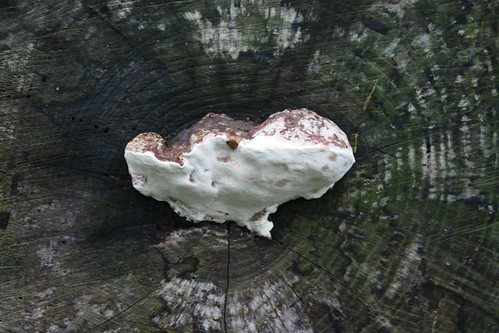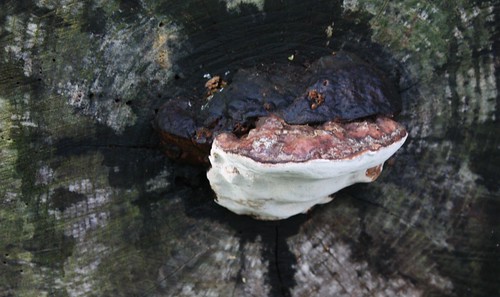A sheltered section of a fallen tree trunk was carved by (I think) someone from the green woodworking group which is based in the front of Abney, led by the very able Joseph Bloor. (I have just seen Joe, and he tells me it was before his time in Abney that the shaping of the fallen wood happened). The newly carved contours allowed rain to sit in ridges of the carving which stayed wetter than the rest of the wood. This allowed the wood to absorb some of the water and allowed 2 fungi to grow through the wood. On the surface of the ridges an encrusting fungus, Botryobasidium aureum, began to produce spore structures.
The fungus softened the wood until it could be excavated by ants, who set about creating tunnels into the wood. These excavations allowed still more water to penetrate into the wood keeping it able to support fungi.
In August 2014, while the Botryobasidium aureum was beginning to fruit, (so had been in the wood for a while), a bracket of Rigidoporus ulmarius developed on the cut end of the trunk section. These brackets are slow-growing after their initial growth. That first emergence reminds me of the foam filler that fills cracks sold in DIY shops, odd bulges emerge out of cracks (preferably) or weak spots in dead wood or living trees. These brackets continue from year to year and look as if they will always be there. I took photos of this one as it changed.

6. Rigidoporus ulmarius 10.8.2013
The white growing area initially covers the bracket (1 and 2). It slowly gives way to the usual brown upper surface and the pores form on the lower surface (3 and 4, 4 being the mature bracket). By 5 the bracket looks less healthy and algae is growing on the upper surface. By 6 the bracket has died and been replaced by another layer of growth on the underside which develops and expands for a while (7). The ant nest by the time photo 8 had been taken, had grown to have outlets on the same cut surface as the bracket, and shortly afterwards the Botryobasidium aureum began to grow round the bracket. It seems to have found a weak area of growth between the 2 growth phases as in 9 the new growth has fallen off.
The ant nest was healthy last autumn but I haven’t seen the ants so far this year.
This could all be the result of the wood carving.
Link to notes on Botryobasidium aureum.
Link to notes on Rigidoporus ulmarius.

















